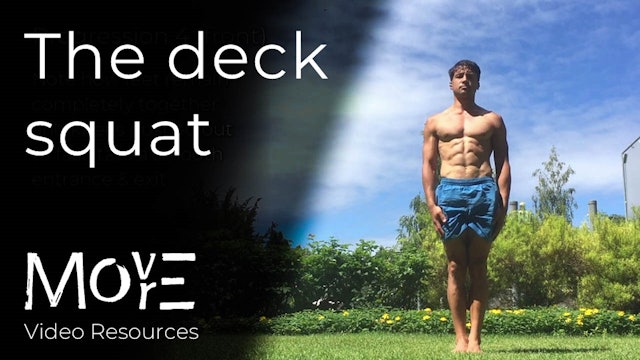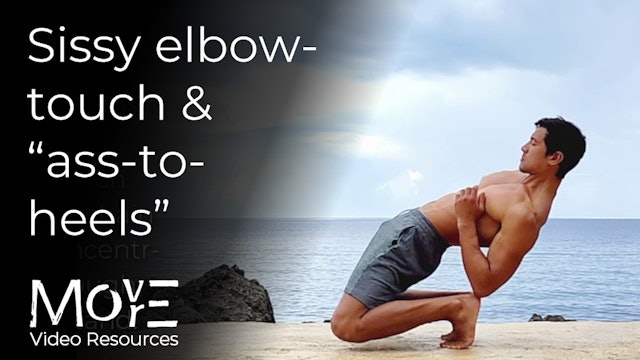Bodyweight (BW) bilateral leg-strength
In considering bodyweight (BW) training for the lower-body, the vocabulary of possible strength-development tools, even for the “trained” individual, is often far more limited than those for weighted/resisted contexts. Beyond bilateral bodyweight squats, even the Calisthenics enthusiast will often be hard-pushed to find variations beyond simply changing the position of the feet wider or narrower.
The result is often resorting to linear-development toward the absurd – bodyweight squats into the hundreds and lunges into the kilometres, ultimately providing just more of the same submaximal-intensity stimulus (and increasingly more so submaximal as conditioning develops) with no development in complexity and little in ultimate potential. For focused stimulation of the POSTERIOR-chain, the options are even more limited – truth be told, however, they are.
LEARN MORE (subscriber-only):
https://drive.google.com/file/d/1Fd9wwuQBWM9BMBP2KTvYisrfdSu4lOSs/view?usp=drive_link
-
Fundamental 'Calf-raises'
THE WHAT:
The fundamental calf-raise is essentially a progressive prehabilitation and conditioning context which stimulates the ankle-plantarflexion muscles & connective tissues. At the same time, worked through a FULL range of motion (i.e. maximal STRETCH in the bottom position to maximal FLEXIO... -
The 'Kneeling lean-back'
THE WHAT:
An isometric-emphasis context focused on patterning & strengthening the "open-hip" angle (i.e. maximal hip-extension), whilst under increasing bodyweight load (the deeper you "lean" backward, the "heavier" the context gets).In this way it shares similarities in loading with the fundam...
-
'Shoulder-bridge'
THE WHAT:
The 'Shoulder-bridge' and its variations provide an easily accessible bodyweight context for stimulating the posterior-chain (namely hamstrings, glutes and lower-back) for a range of purposes.For those unfamiliar with lower-bodyweight contexts, it can serve as a strength developer in ...
-
'Shoulder-bridge' walks
THE WHAT:
A dynamic walking context developing knee-stability through the lower posterior-chain. Whilst the range travelled & distance between steps is self-directed, there is exposure to a greater variety of of loading angles when you explore as far to each side as possible and change up the ste... -
3-stance SLDL (with resistance band)
THE WHAT:
The '3-stance SLDL (straight-legged deadlift) is a moderately-resisted (band) "hinging" pattern, performed in stances A1. Wide-stance, A2. Close-stance (feet together), and A3. Neutral-stance (shoulder-width).Whilst at its core it is posterior-chain range-development context, its prac...
-
Basic 'low-gait' sequence
THE WHAT & HOW:
A developmental sequence (increasing 'counts') to accustom & condition to the ranges of bipedally abducted 'low-gait', the world between standing, and floor-entrance.As a range commonly avoided simply because of its discomfort, making it more familiar (i.e. patterning, developin...
-
The 'Harop Curl'
THE WHAT:
The 'Harop curl' is a posterior-chain strength & conditioning tool whose intensity can be easily manipulated by "mechanical advantage" (i.e. sequence of "hinging" in hips & knees).Due to positioning, the posterior-chain (namely hamstrings, glutes & lower-back) experiences an increasin...
-
The Deck Squat
THE WHAT:
A most fundamental pattern for getting down and up again which goes through maximal lower-body flexion & transferring into global spinal flexion & back again. It should be performed BAREFOOT in order to give an accurate representation of you variation/progression.LEARN MORE (subscribe...
-
The Cossack Squat (Low Gait Opener)
THE WHAT:
The 'Cossack squat' is a fundamental mobility tool for developing range in leg abduction. Further, it is an introduction to exploring the 'low-gait' position which brings us toward the mid-level, and ultimately into the floor once fully developed. Endlessly giving, easily adjusted & int... -
The fundamental 'Sissy squat'
THE WHAT:
The fundamental 'Sissy squat' is essentially a top-down, reverse-loaded hinge made at the knees to the deepest range, and back again. Whilst effecting strength & mobility-development of the anterior-chain, its progressive practice & conditioning also contributes to general knee stabilit... -
Sissy 'touchdown'/ to Role
THE WHAT:
A fundamental integration between the capacity-development context ‘Sissy squat’ and the basic ‘Role’ pattern, connecting the world of standing to the world of ‘Groundwork’ through a controlled transition into the floor. The variations are simply from isolated “touchdown”, to either a ‘... -
Low-bridge 'slide' & Low-bridge Rotations (LBR)
THE WHAT:
The 'low bridge' is a context which has the dual benefit of developing mobility in the anterior chain, as well opening up movement possibilities. As the lumbar spine is also in a much more neutral position than in a high-bridge, for example, it can still be practiced even by those with ... -
Standing-to-bridge contexts
THE WHAT & HOW:
Contexts for exploring a controlled transition from standing, into bridge. Whilst in its isolated practice (standing/Sissy-squat to bridge & returning) significant control in back-bending range is requested & developed, in the integrated variations it ultimately serves as a bipeda... -
Sissy elbow-touch & Sissy "ass-to-heels'
THE WHAT:
Measurable contexts for linearly-progressive 'Sissy-squat' development. Once particular consideration to keep at the forefront in the process of practice is that these forms are not solely capacity-dependent.Rather, as we venture deeper into the potential of what is available regardin...
















